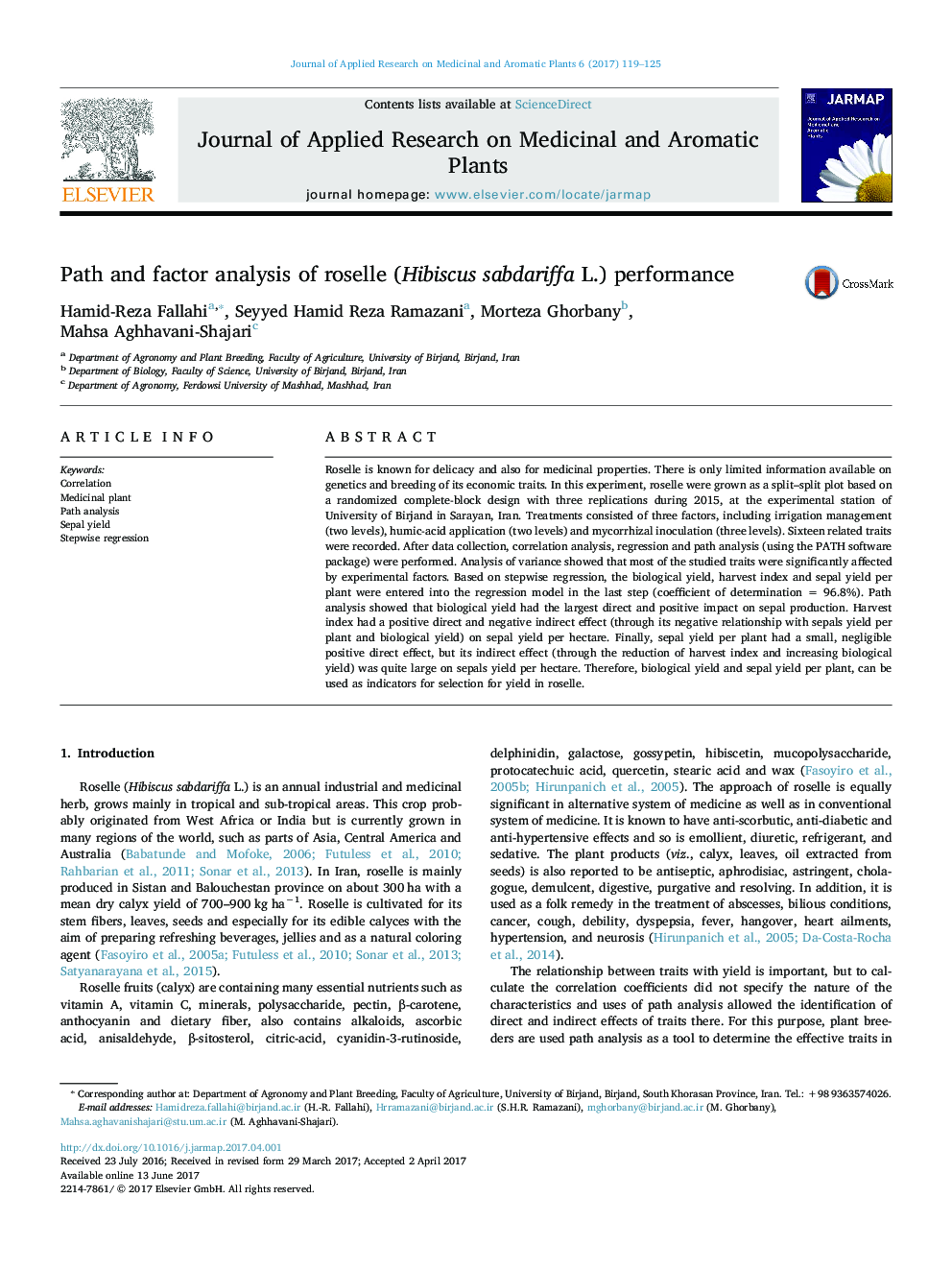| کد مقاله | کد نشریه | سال انتشار | مقاله انگلیسی | نسخه تمام متن |
|---|---|---|---|---|
| 5635184 | 1581558 | 2017 | 7 صفحه PDF | دانلود رایگان |

- Experimental factors had significant impacts on most studied indices.
- Biologic yield, harvest index and sepal yield per plant were the main traits in explaining the variation in sepal yield.
- Path analysis showed that biological yield had the most direct and positive impact on sepal production.
- Harvest index and sepal yield per plant had direct and indirect effects on sepals yield per hectare.
Roselle is known for delicacy and also for medicinal properties. There is only limited information available on genetics and breeding of its economic traits. In this experiment, roselle were grown as a split-split plot based on a randomized complete-block design with three replications during 2015, at the experimental station of University of Birjand in Sarayan, Iran. Treatments consisted of three factors, including irrigation management (two levels), humic-acid application (two levels) and mycorrhizal inoculation (three levels). Sixteen related traits were recorded. After data collection, correlation analysis, regression and path analysis (using the PATH software package) were performed. Analysis of variance showed that most of the studied traits were significantly affected by experimental factors. Based on stepwise regression, the biological yield, harvest index and sepal yield per plant were entered into the regression model in the last step (coefficient of determination = 96.8%). Path analysis showed that biological yield had the largest direct and positive impact on sepal production. Harvest index had a positive direct and negative indirect effect (through its negative relationship with sepals yield per plant and biological yield) on sepal yield per hectare. Finally, sepal yield per plant had a small, negligible positive direct effect, but its indirect effect (through the reduction of harvest index and increasing biological yield) was quite large on sepals yield per hectare. Therefore, biological yield and sepal yield per plant, can be used as indicators for selection for yield in roselle.
Path diagram showing impacts of sepal yield per plant (Trait 1), biological yield per ha (Trait 2), and harvest index (Trait 3) on sepal yield per ha (Trait 4) in roselle. (P) Path coefficient, (r) correlation coefficient and (R) Residual effects.69
Journal: Journal of Applied Research on Medicinal and Aromatic Plants - Volume 6, September 2017, Pages 119-125